Don't wanna be here? Send us removal request.
Text
How And What India Has Been Coping With During The Deadly Covid Second Wave

Last rites being performed by a family, like many, at the Seemapuri Crematorium Center in Delhi
The second wave of the coronavirus pandemic has been nothing less than that of one wreaking havoc and chaos for India - social media full of SOS messages asking for hospital beds, oxygen cylinders, medicines; crematorium centers had never witnessed such large amount of deceased being cremated, crematorium centers even had to be expanded with increased number of pyre-platforms at various parts of the country, and now the abandoned lifeless being found in rivers - simply nothing less than a catastrophe.
Heartbreaking visuals of people gasping for breath, lined outside hospitals unable to find beds, heavy shortage of important medicines like Remedesivir, lifeless bodies waiting for multiple hours at the crematorium centers for their turn to be cremated - this surely has been one of the worst health crisis India has ever seen. Exhausted frontline workers and workers at crematorium centers say they have never seen such huge crisis before. Woods have come to be short in numbers to cremate the dead. How have the authorities dealt with this?
There’s possibly not a single person in India who has not lost at least one of their relative, friend or a known one in last two months.
The centre alone did not fall well short and caught ill-prepared, states are equal culprits in their jurisdiction.
India has been under criticism by global media continuously for under-reporting of numbers of the deceased, and its lack of testing, with many reports from journalists on ground suggesting that the actual numbers of those deceased is actually at least 10-15 times more than the official numbers. A report showed that as the official data shows that in the capital of Madhya Pradesh, Bhopal, had seen only around 1,000 deaths due to covid since the pandemic began last year, whereas the data kept at crematorium centers shows that around 3,700 funerals have been done according to covid protocols in the city in the month of April alone in 2021. Such is the scale of under reporting of numbers in the official data, be it Delhi, Rajasthan, Uttar Pradesh, Bihar, and a majority of the Indian states.
From VIP treatments to the well-off even during these hard times, a classic case of Delhi government’s attempt to book Ashoka Hotel for safety measures for Delhi HC Judges with no inputs from the latter raising many eyebrows recently, states too have had their own bit of criticisms of handling of things during the pandemic.
When urban parts, despite having all the infrastructure and facilities, have seen such destruction, things in rural India have slowly started to catch headlines. With lack of information amongst the people about the virus and vaccines, multiple people in villages have been dying everyday lately complaining of fever, fatigue and shortness of breath, with no oxygen and testing facilities in most of the rural parts of the country despite being 15 months into the pandemic. How cruel things could unleash in the rural areas is a dangerous thought having seen the recent peak in urban ones.
Almost all of the country have been either in a lockdown or strict curfew with almost all states imposing the same, and this has shown some positive results in the last week with positivity rate coming down in various urban areas. The issue of oxygen crisis, after weeks long deliberation by the Supreme Court and various High Courts, have been dealt with to an extent in some manner only after the apex court made a separate National Oxygen Monitoring body.
The true figures lay not in the official data, but the crematorium centers of this country.

People waiting in queues at vaccination centers to get their jabs
Vaccination drive in many states have come to a halt owing to shortage of vaccines, with even those who are due for their second doses having difficulties finding a slot in many parts of the country. When the second wave started to wreak havoc, the widely demanded move by the opposition to open the vaccination drive for not only 45+ but for all adults was being considered by the government and given a nod, only to open big loopholes in the world’s largest vaccination drive, with one being heavy shortage of jabs.
The gap between the two doses of Covishield vaccine has been increased to 12-16 weeks on the basis of scientific data to show for it, surely there must be data now to show for it, but if this is so, then why the same expert’s panel earlier in February 2021 had advised states that the second dose of covishield should not be administered after 8 weeks in any case as it may not work then, and why Union I&B Minister also tweeted this very advisory on the same day? We cannot possibly answer this question just like we cannot estimate that actually how many people have died due to covid in this country. But for the record, The Lancet and WHO have themselves clarified way before that the gap between two doses for AstraZeneca vaccine, or Covishield should be 12-16 weeks; The UK follows 12 weeks gap and Canada follows 16 weeks gap, and India will follow the same to tackle the heavy shortage of jabs. The gap between two doses of Covaxin, on the other hand, stands the same as before.
When The USA and the European Union gave vaccination orders of millions of dollars last year, India did not order a single jab. Should not have we placed such orders last year itself? Did or did not the experts gave this input at that time? Have we even been doing it till as late as earlier this month? If not, then this itself is a much larger issue, but there's no transparency. State governments have been left with no other alternative than to issue global tenders to buy vaccines, which actually the centre should do in the global market, and as a result, not India, but its states are competing each other in the global market to purchase vaccines. Starting with Uttar Pradesh, then Maharashtra, followed by Orissa, Delhi and Karnataka have issued global tenders already to purchase vaccines.
Not a single Indian media outlet is now projecting Atmanirbhar slogans anymore, which was literally served by the same media to its viewers for months, confining them in a whole different world altogether. And it's only a matter of time that a new slogan arrives, and literally the same channels project it again for months, confining its viewers to another new world altogether, yet again.
Surely, superpower India of 2021 would not have wanted itself to be projected in such a manner in the foreign media. The majority of domestic mainstream media would not show you this, and would continuously keep you distracted with bogus narratives and side of things, killing your ability to question the status quo and to sustain a healthy democratic India.
Indian media back in January widely publicised about the ‘World’s Largest Vaccination Drive’, which holds true given our population, but no questions were asked about procurement of vaccines. Frontline covid workers were the first priority to be vaccinated, rightfully, and plan was to vaccinate 30 crore frontline workers inside 3-4 months in first phase of vaccination drive; and 5 months into the drive not even all of the frontline workers could be vaccinated. By numbers, India is amongst fastest vaccinating countries, but when it comes to ratio of its population, it fares poorly with not even 3% people been fully vaccinated yet. It is important to look into the matter and understand how much India has spent on research and production of vaccines.
A report from The Guardian, issued on 2nd April, 2021, claimed that as the US and European Union nations have been spending billions of dollars as aids for companies for research, development and production of vaccines, there is no concrete evidence of India spending on research and production of vaccines. Before the coronavirus pandemic struck, India was the largest vaccine producer in the world, but when the pandemic struck, soon the US and China surpassed India as largest vaccine manufacturers. Indian media had to go from taking pride in largest vaccination drive to reporting of mass shutting down of vaccinating centers owing to lack of jabs, such has been the vast hallucination we have been served for some years now. Owing to this very pride of Indian media, which not only confuses its people between Indian companies and the Indian government, it also reminds its people everyday that their very ability to question to sustain the world’s largest democracy is being massacred everyday.
After this report from The Guardian on 2nd April, 2021, the Indian government submitted an affidavit in the Supreme Court on 11th May, 2021 in which the government has clearly and specifically stated that the Indian government has not issued any grant or aid to the Serum Institute of India or Bharat Biotech, which implies no funds on research or development even for domestically developed Covaxin. Only 46 crores were funded to Bharat Biotech for clinical trials of Covaxin, that too by ICMR. Which means Indian media has been taking pride in vaccines made by AstraZeneca and a domestic company Bharat Biotech, and did not question for even once that why we have not been helping at least domestic companies for vaccine research.
If the affidavit submitted in Supreme Court by the government stands firm on authentic data and information, then what about the announcement made on 13th May, 2020 about 100 crores being allotted as aids for domestic candidates developing vaccines? Around same time last year, the US was investing 15 million dollars in various vaccine developing candidates, and was advancing vaccine orders worth 300 million dollars even before vaccines were developed. On 12th December, 2020, Union Finance Minister announced 900 crores aid for vaccine production, but the affidavit submitted by the government itself in SC claims no such grants were ever made. 20th April, 2021, news came in that Finance Ministry is advancing loans worth 3,000 crores to SII and 1,500 crores to Bharat Biotech for vaccine production, the affidavit holds advancement of these loans valid, though the money is yet to reach the companies. Adar Poonawalla of SII said last month while talking to a media outlet that he has been expecting these loans on the basis of media reports, thus he too believes in the Indian media, and on the same expectations his company has taken heavy loans from banks to continue vaccine production of Covishield. By the way Adar Poonawalla has field away from the country citing pressure from "influential" people and has been shying away from answering to what might have led to such huge covid surge in India during its second wave.
Thus, there was no Indian penny involved thus far in the production of vaccines by both these companies according to the Indian government.
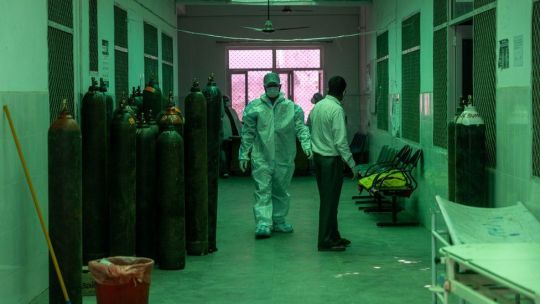
With how we have been coping with the pandemic, various experts have been giving their ideas and views to deal with issues, and “revolutions” in Indian healthcare system are urgently required in post covid-era.
When the UK and many members of the European Union were witnessing devastating second wave earlier this year, Union Ministers in India were claiming that India has defeated covid and that India is in the ‘endgame’ of the pandemic, in fact the numbers were actually very low during the same period, and India was starting to return to normal just when the second wave started to unleash around mid-March, exposing lack of plans to tackle a potential second wave. Lack of preparedness on health infrastructure was visibly evident, when every political party was busy campaigning in states assembly elections and large crowd gatherings were seen at Kumbh. Could not these two super spreader events have been avoided temporarily to control covid surge, just like Nizamuddin Markaz could have been avoided last year, which again acted like a spreader event in the last wave, and was presented as such a heated topic by the Indian media for months last year?
In order to cope with heavy shortage of jabs, many health experts have been demanding government intervention in expanding vaccine production by involving other vaccine manufacturers as well by providing them vaccine formula and advancing tenders for vaccine production, for which steps are being taken only in this last week. The pace of the vaccination process also has been under heavy criticism as to why door to door vaccination proposals by several states has been turned down by the centre citing the latter has no such policy, given that polio vaccination process was a great success with minimum volunteers.
If both, SII and Bharat Biotech, are providing vaccines to the centre, states and private hospitals at different prices, with lowest price being for the centre and highest for private hospitals, could not the centre itself buy vaccines and provide them to state itself given that if states buy them on their own then they will have to pay double the price compared to the centre.
The money of 22,000 crore rupees Central Vista project, if used to buy covid jabs, would buy a whopping 146.66 crore jabs, potentially enough to fully vaccinate around 70-72 crore Indian citizens, which again is potentially enough to create herd immunity throughout the country, just a mere statistic based on facts.
It is important to keep current feedbacks in mind in order for the work to be done. No person in this country would have ever thought that private hospitals one day would run out of their capabilities to treat them, and potentially exposing that bulk of them are mere money making firms. It is high time India start to spend more on its healthcare and education, and the possibility of government taking complete control of healthcare and education, like successful western countries, should not be ruled out even after it being a slow process to come true.
Recent lockdowns and curfews by states have shown a dip in covid numbers and positivity rate, oxygen crisis seem to be in some control in the recent week, and vaccine production is being increased after government stepped in. Surely next few weeks are very critical to control the new surge of B.1.617 Indian mutant strain, with people hoping that they will overcome this health crisis soon.
But history will remember that India’s numbers ascribed not in the official data, but at the crematorium centers.
#india#indian government#Indian Media#coronavirus#covid#pandemic#india fights corona#vaccine#measures#politics#social
9 notes
·
View notes
Text
Trolley Times : The Farmers’ Way Out Of The Bogus Media Narratives

Farmers at Delhi's border reading a copy of the first edition of bi-weekly newsletter Trolley Times.
On Friday morning of 18th December 2020, as the ongoing farmers’ protest entered its 23rd day, those stationed at the Singhu and Tikri borders of the national capital woke up to the first-ever issue of a bi-weekly newsletter, exclusively by and for the protesters : Trolley Times.
When national media, with its bogus narratives, did not show their side of the story, the farmers paved their own way aiming to touch every single corner of the kilometres-long agitation at Delhi’s borders and ensure that the message from the stage, latest developments in talks with the government and other such reports are easily accessible to the agitating farmers.
Born out of a random conversation at a trolley about 4-5 days back, the protestor’s very own newsletter received a warming response with all of its 2,000 copies, which costed around Rs.12,000 to be printed in Gurugram, being distributed and read widely by those at the site. Seeing the wide support to the first edition, the Trolley Times team now aims at releasing its second edition with 10,000 copies.
“Inquilaab di talwar vichaaran di saan tey tez hondi ae (the sword of revolution is sharpened at the whetstone of ideas, a quote by Bhagat Singh),” read one of the lead headlines of the bilingual newsletter that has been named Trolley Times.
The newsletter is printed in both, Gurumukhi and Hindi, so that it reaches as wide protesting audience as possible.
The Rationale Behind Trolley Times
The first issue of the paper carried Bhagat Singh’s quote on struggle; photographs from the centre of the struggle; story of a woman farmer, Gurmail Kaur, who died during the protest; some works of art and the lead article gave the message of unity, struggle and victory. The paper was simultaneously launched digitally on all social media platforms like Facebook, Twitter, etc.

A farmer reading out the ‘Trolley Times’ at the Singhu border.
The style of the paper, as said, will be conversational. “We want it to be read like the discussions taking place in village sath (common place),” the team says when asked about the newsletter, adding “we have a platform now to counter all kind of trash being dished out by some sections of media”.
The team added, “ We reached here on 26th November and soon after the national media began calling us terrorists or Khalistani. But we are not those people at all. We are very attached with how to make this a peaceful protest”.
Just try to imagine the extend to which the national media is losing its credibility and how it has increasingly been focusing on interests of a certain section of the society that others have now felt the need of starting their very own form of news media. Certainly has some sense of Atmanirbharta in it, quite a satire in itself.
The national media, yet again, left no stone unturned to divert the issue by calling it a one-state protest, politically-mobilized protest, maoist protest, Khalistanis, freelancers, or their favourite term - anti-nationals. Imagine what a farmer must be going through when he’s being tagged with such terms when he’s so far away from home, out there on the ground, shivering in this freezing weather, being water canon-ed in this weather, while all he’s been doing is asking to be heard about his issues and requesting for an another way for the concerned policies to be carried out.
The government says that the protesting farmers are being “tricked” by the opposition, yet again of course, with false information and narratives. A quick reminder, these are the same people who wrote the opposition off in 2019 general elections relentlessly, just like 2014, but still apparently the weak and dusted opposition, if any in this nation, gets able to “trick” people every time the government is held accountable.
There has not been a dialogue between the government and the farmers now for around 18 days, keeping the deadlock intact. Time will tell how the drama unfolds ahead, but the farmers now have been out there in the open for more than a month, and atleast 44 of them have succumbed to the extreme weather, and still standing their ground.
#india#indian government#farmer#farmers bill#Indian Media#ndtv#India Today#bbc#CNN#al jazeera#politics#social
2 notes
·
View notes
Text
Why India’s Social Milieu Needs An Urgent Contemplation
India, traditionally, has been offering astounding variety in virtually every aspect of social life - diversities of ethnic, linguistic, regional, economic, religious, class, and caste groups crosscut Indian society, which gives light to its very inclusive, secular and democratic character. But why there has been a social unrest lately?
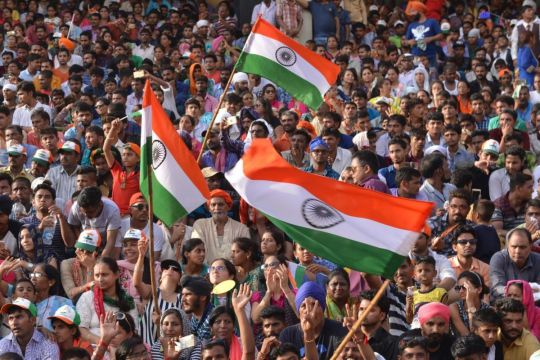
India ranks 144th on the World Happiness Index out of a total 156 countries on the list, even behind the likes of Pakistan, ranked 66th, and Bangladesh, ranked 107th.
17th June, 2019, a 24-year old man called Tabrez Ansari was mob-lynched in Jharkhand. He was tied to a pole sometime around midnight, and was beaten brutally till 6 in the morning, and was also forced to chant Hindu sayings. As usual, police arrived late, Tabrez was taken to the hospital, where even his blood pressure was not recorded. He died four days later.
Kashmiri Pandits were victims to a similar unfortunate happening. They were forced to exodus from their own home, and ever since, Kashmir has been even more of a hot topic.
It was a similar mob which chased and killed Inspector Subodh Kumar Singh in December, 2018 in Bulandshahr. He was trying to control a mob that had gone on the rampage after cow carcasses were discovered nearby the locality. The same mob also raised slogans against the police during the unfortunate happening.
Back then, between 2015-2018 specifically, such things were done in the name of cows, an animal which holds a religious significance in Hindu mythology. Considerable amount of such happenings on the name of cow slaughtering frequently grabbed news headlines back then, and as a consequence, consumption of beef in India saw some low. When reports of cow being starved to death in official government shelters started coming in, and also about that stray cattle were destroying crops and farmers were not very pleased with it, politics abandoned cows. It is obvious that cows, along with other animals, need to be protected, also given the fact that dairy products are a must, there needs more to be done to protect and nurse them. But the project of fear and violence that had been started, still continues in various forms.
But, unfortunately, cases of mob-lynchings still take place in our beloved India. The very recent case of Palghar district in Maharashtra, where two Hindu saints, while being in police custody and being taken to Gujarat, were attacked by locals. Reports suggest that the rumors were spread in the area about a gang which abducts children, and on the suspicion of the same, the saints were beaten to death, while the act of police standing quietly beside raised many questions.
A particular section of society, including sections of media, left no stone unturned to give it a communal angle. And there is no denying that there are communal and casteist angles to most of such cases, but there is a larger angle to it. The fact that somehow normal and a routine act it has become to lynch anyone you disagree with, who is outnumbered, is a thing which we need to question. What message are we passing on to the youth? Aspiring to be a global superpower, what are we projecting ourselves as?
The Larger Picture
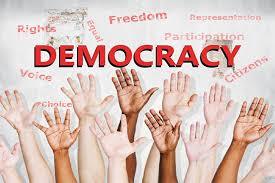
Democracy has space for various views, expressing dissent in a dignified manner, solving issues, but no democracy can justify use of violence or any arbitrary means to deal with dissent. The very feeling of people that they too are ours should not be compromised at any cost.
The fact that the frequency of such acts has increased in last few years outlines that a message has been passed on to the society, especially the youth, that to beat up someone who does not agree with you, or who expresses any or some form of dissent is a normal practice. Of course, there also has to be some manner and dignity in which dissent should be expressed in a democratic society. But to suppress dissent brutally should not be a solution in a civil society.
This the reason why a new debate had acquired the headlines for some time about whether and how India has been growing intolerant rapidly, but the media and the viewers, the public, a large part of it, did not pay much attention to it. This was and is, what I believe, still a relevant question to ask and explore.
A considerable section of the youth has grasped that dissent or disagreement can be or has to be suppressed, even if it needs violence, which is more than worrisome. This is very much evident owing to recent JNU Campus Violence amongst students back in winter during anti-CAA protests. And the youth today, is the future tomorrow, which is why this makes it even more worrisome.
This even stops many from expressing their views, fearing that might get beaten up by the people having other views, and by not letting other ideas to be out there in the society, the prevailing ideas of the authorities are being hailed as champions. This is where we are failing as a democratic society. We have stopped or started to prevent asking questions.
A democratic society is always full of different ideas, views and perspectives, that is the beauty of democracy. A democratic society always cleaves up, if a one and only idea prevails in the society, there has to be something wrong, we are never going to realize what's wrong in such a scenario, and we have contemporary examples of such autocracies. And there were reasons why human, with time, switched from monarchy to democracy, he liked the idea of discussing various angles and coming up with one which could be best, as it will cover as many as loopholes, angles and point of views as possible, for the best of interests for every section of the society.
The Core Youth Issue

India’s 65% population comprises of people aged 35 or below, making it potentially one of the youngest country in the world, but what’s fresh in them?
A child learns most of the civil and moral values at home, he learns what he sees, and tends to practice the same, this is the normal scenario. What he learns through the education system, along with his moral values, is somewhat an outline of what kind of a person one is, how one’s attitude is. And India’s education system has been questioned ever since.
The Indian government’s very own draft education policy tells us that National Assessment and Accreditation Council (NAAC) rates 68% of our Universities average or below average, and 91% of our colleges are rated average or below average. These second-and third-grade colleges would have produced generations of average or below average students and scholars.
Today’s youth of India has been in the making for decades. A great deal of efforts must have been put in to finish off all the curiosity and hunger for knowledge and information. The youth no longer wants to understand why a system made them spend lakhs of rupees studying, when at the end most of them could not find jobs which could even earn them Rs.20,000 per month, but still are repaying their education loans. It is the official data released back in 2018 that around 67% families in India survive with a monthly family income of Rs. 10,000 or below.
Those who demand information, who understand their world, those who question the status quo, are the ones who sustain democracies. Can we expect such democratic ideals from the youth of a country where 91% colleges and 68% Universities are average or below average? 65% of Indians might be under the age of 35, but there’s little sign of anything fresh in their thinking. Their minds are not young. They were first burdened with great ignorance, and now they’ve been blinded by communalism.
With 91% colleges being second and third rate, it was inevitable that the youth is kept away from the realm of knowledge. This must have had a large say on why WhatsApp University became so popular, the very messages people received on their private chats must have felt to them that they now had an access to knowledge, the very fact that it was so easily accessible, made it very impactful. Lies and misleading information designed to prejudice them and incite them to violence now began to reach their smartphones as personal texts.
Fear Of Speaking Out (FOMO FOSO)
Our Lok Sabha has passed amendments to Unlawful Activities (Prevention) Act last year, that gives authorities the power to declare any individual a ‘terrorist’. After it was amended, many social workers who have worked for the under-privileged for years, and raised important issues which was not in the best of interests for the authorities, have been imprisoned under UAPA.
As an obvious consequence, many have held themselves back to not speak out on issues they would have spoken on otherwise, the fear of intolerance of some sections of the society which may turn ugly and the fear of trolls of social media of the great IT Cell may also have been the reasons for the same.
There was a very popular dissent outrage in the form of protests in the form of anti-CAA-NRC protests. Protests in cities and college campuses took place across the nation, some also turned ugly as violence broke out in certain protests. To counter anti-CAA-NRC protests, pro-CAA-NRC protests were also being held in various parts of the country, which was first of its kind. The national lockdown owing to the coronavirus pandemic has brought the topic to a stop, but during this lockdown, various student leaders of anti-CAA-NRC have been charged under UAPA.
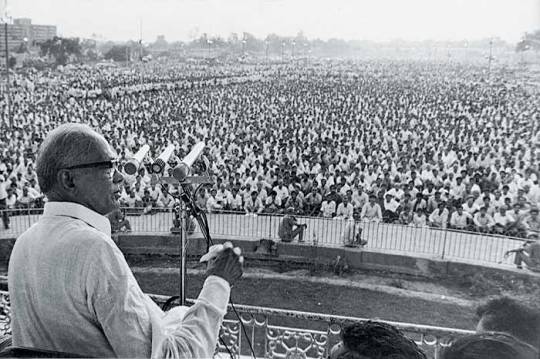
JP Narayan addressing a rally during JP movement in 1974. Many scholars speculate that the real Emergency started not in 1975, but in 1974.
In the history of independent India, its hard to remember any other popular mass protest where people across the nation came to roads to express dissent to the authorities, only one such example crosses our minds - the JP Narayan movement in 1974, during the time when Indira Gandhi used to be the PM of India, which mostly included students, and was ultimately suppressed after imposition of Emergency in 1975. But owing to a new practice we have accepted of labeling every sound that questions the authorities as anti-nationals or leftists.
India has had a history of patriarchy, which still prevails in many forms. Women in India, historically, have not been provided equal rights and recognition as men do. In such a nation, be it in the name of anti-CAA-NRC, such a large all-women protest of a scale as big as Shaheen Bagh is a very, very rare thing. Irrespective of our political affiances and interests, the fact that historically deprived women actually came out and led a mass protest on their own, which lasted for more than 3 months and has come to a haul owing to the pandemic, this certainly deserved some thoughts.
Motive of the protest, political interests and such stuffs can be and should be questioned, but in the process we should also give some recognition to things which are rare and important.
We all may share different political thoughts, different political affiliations, but at the end of the day, we all belong to one nation, and our ideas should be for the best of interests for our nation and its people as a whole.
#india#indian government#Indian Media#indian youth#dissent#politics#society#ndtv#India Today#CNN#bbc#new york times
8 notes
·
View notes
Text
The Petrifying Situation of the Indian Media
India ranks so badly for press freedom because much of the media has simply stopped doing its moral job, and, as a culmination of facts, journalism is in some serious trouble in the world’s largest democracy. I’m afraid the consequences could be dire.
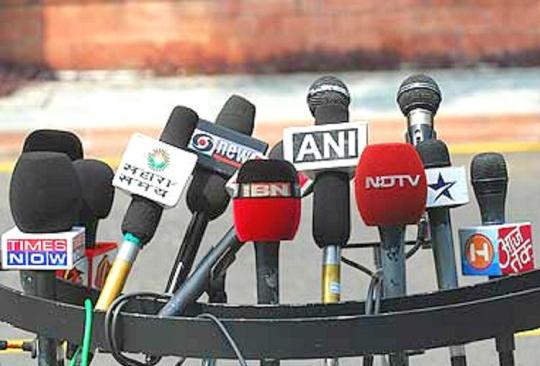
A cluster of mics of different channels of India's television media, accountable for shaping the social and political thoughts for the most of the country's population.
March 6, Vinesh Kunhiraman, The Media One anchor, goes on air, just like any other day in the office, about to tell his channel’s five million viewers in Kerala about the death anniversary of a famous comedian and the latest updates on the coronavirus pandemic.
But just a few minutes into the broadcast, he sees the managing editor rushing towards the studio floor gesturing desperately. As soon as Kunhiraman realizes that something’s not right, his image dissolves into a blue screen, a message shows up on the screen saying that there’s no signal and that they regret the inconvenience. The channel’s uplink, all of sudden, goes dead.
Actually, this was no technical difficulty. The channel was cut off as a consequence of order issued by the Union Ministry of Information and Broadcasting to block the channel for 48 hours, because it had covered February’s biggest news story -- mob attacks on anti-CAA protesters and in Muslim-dominant areas of Delhi, which took place just a few days after the result of Delhi’s Assembly Elections, which ultimately flared into a broader unrest and the Delhi Riots -- in a way that seemed “critical towards Delhi Police and R.S.S.,” the order said.
This shows a glimpse of how tolerant the government of world's largest democracy actually is about it’s criticism, despite many of the government ministers and the Prime Minister Modi himself stating that he wants the government to be criticized as it makes a democracy stronger and motivates him to work better.
WIDE URGE TO ADVERTISE “POSITIVE STORIES”
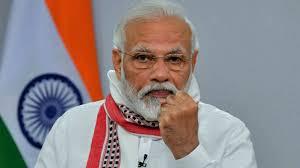
PM Modi addressing the nation amidst the coronavirus pandemic and about the government’s steps to address it.
Just before he announced the world’s largest coronavirus lockdown, PM Modi met with top news executives and urged them to publish “inspiring and positive stories” about the government’s efforts. Then, after the lockdown stranded half a million migrant workers, with some dying along the highways, government lawyers persuaded the Supreme Court to order all media to “publish the official version” of coronavirus developments, although outlets are still allowed to carry independent reporting.
A large section of leading broadcasters were quick to welcome this decision of the apex court, but left many intellectuals with questions on India’s constitutionally guaranteed freedom of speech and freedom of press.
India’s media universe is vast, perhaps the biggest in the world: More than 17,000 newspapers, 100,000 magazines, 178 television news channels and countless websites in dozens of languages. Thousands of Facebook pages call themselves news publishers, and YouTube is filled with local bulletins on everything from real estate trends to police raids.
Under immense pressure from the government, many media owners have fired their journalists who have criticized the PM and his government, and asked their media houses to not to run stories of hate-crime trackers that may embarrass the government or the ruling party. Instead, media houses have been asked to, and have been running what is being called “positive and inspiring” stories so that a “healthy environment” is being maintained throughout the country, and that could actually lead to a number of conclusions from various points of views.
This is so evident at the time of the coronavirus pandemic, where media houses have been given official orders to run the “official versions of the stories so that people do not panic”. Indian media has been constantly pressing on to project the fact the fact how India have been tackling the coronavirus pandemic outbreak way better than the much developed western countries, but not many compared, what we should call, the “other statistics” -- the amount of daily covid tests conducted, and its comparison with the same countries it claims to be performing better from.
Media, being the fourth pillar in any democracy, is morally obliged to present the facts in the way they should, in order to be in the best interest of the people as a whole. Even the academic study of journalism has part where it teaches the students, or the future journalists, to see government’s policies and steps with suspicion, as if media starts supporting government everywhere in any democracy, things could turn out to be disastrous, yes of course it is evident.
They can only ask PM about how much does he sleep, from where does he get the motivation, how much of a fakir he is. And this is the same person who left an interview with just three minutes into it because he was being asked bitter questions about his role during the 2002 Gujarat Riots, Modi was being interviewed by Karan Thapar then, and has not given any such bitter interview ever since even after becoming the Prime Minister of India, and has not even indulged in any press conferences but one, that too just before the 2019 Lok Sabha Polls, in which he did not answer a single question, in fact, gestured many to Amit Shah to answer.
Instead, days before 2019 Lok Sabha elections, PM Modi gave an "non-political" interview to a Bollywood actor, Akshay Kumar, in which he was asked questions like "how does he have his mangoes".
STRATEGICALLY CONTROLLING THE COUNTRY’S THOUGHT PROCESS
It is a fact, even is a part of academic structures in schools, that Adolf Hitler ran a hate propaganda against the Jews for his political gains, most probably fulfilled his personal desires too through it, and eventually built such a large campaign that he was able to convince millions of Germans that a clear minority population composition of 6 million Jews were a threat to Germany and it’s integrity, and that to eradicate and eliminate them by killing them in large numbers and fleeing them was the only possible way to save Germany.
At first, this sounds outlandish for any democracy, as to solve differences between communities, especially by the side of government, rather sounds pretty un-democratic. But the fact that Hitler was able to convince this as only possible way out is very intriguing, as he off course had a popular public support. How was he able to do that?

Adolf Hitler addressing the people in a rally
In Hitler’s Nazi Germany, media was censored by the government, as a result of which what the media can open as news in public domain was solely controlled by the Hitler’s government, which led to media only praising Hitler as Germany’s Savior and projected every person who criticized Hitler as a traitor, giving Hitler complete power to prove so, and execute him. The whole anti-Jewish sentiment was a result of years of propaganda run by the Hitler’s media to earn a wide public support to execute his dangerous plans and unleash havoc.
Seems familiar? A considerable section of the world society sees the same signs repeating in India based on religious grounds. Starting from near-end of 2014, India’s media has run a large scale propaganda based on religious grounds, resulting in instilling of hatred against the largest religious minority in India, and convincing people that they do not belong here. As a result, India has seen a sudden upsurge in mob lynchings based on communal lines, a strong hostility against sections of society, challenging the integral character of India’s Unity in Diversity and it’s very traditional secular character.
CAPTURING THE STILL “FREE VOICES”
The current NDA government and PM Modi are backed up by an army of online allies who discredit and harass independent journalists; female journalists, in particular, have been besieged with abuse and rape threats. And the police say Hindu nationalists were behind the 2017 murder of Gauri Lankesh, a female newspaper editor hailed as one of India’s most crusading journalists.
And for the most part, Indian news outlets have knuckled under, concluding that since much of the public supports the prime minister, they should, too. Even skeptical journalists censor themselves, afraid to be branded anti-national by a government that equates patriotism with support for PM Modi.
The Modi government has been particularly concerned about broadcast media, which reach into every corner of the country. In such a scenario, months before 2019 elections, an ABP journalist, named Punya Prasun Bajpai, questioned the results of government’s scheme of providing financial help to farmers, and broadcasters stated that the broadcast of the show was being interrupted in various parts of the country until the ABP journalist was being asked to leave days after the incident.
There are numerous such examples of journalists and reporters being left out and asked to leave by the broadcasters, so that they’re not being branded as anti-nationals, or lose sponsors or afraid that cases might be filed against them.

Arnab Goswami, from the Republic, hosting his debate program
Arnab Goswami of the Republic TV has come out be one of the most prominent Right wing, pro-government journalist in recent times, with constant praises for PM Modi, his government and his policies and of course his ideologies, and has constantly questioned the opposition for every misdeed in the country. He accused the Congress and Sonia Gandhi of sending goons to attack him in April.
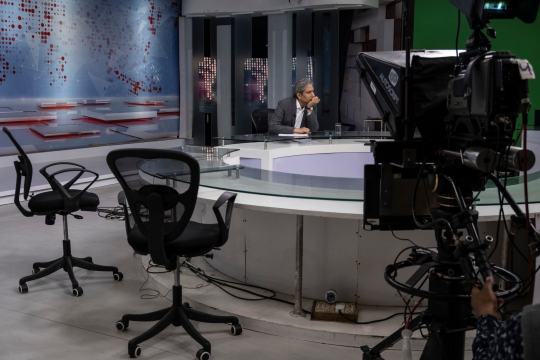
Ravish Kumar, NDTV, in between his daily debate program
Ravish Kumar of NDTV, another popular journalist, this time one who has been critical of government, not only during the NDA tenure, but a hard critical of UPA government too. Being a hard critical of PM Modi and Amit Shah, he has been abused constantly on social media and death threats for him and his family, and the Modi and Shah’s BJP has now boycotted Ravish for years, by not sending any spokesperson in his show.
PM Modi, after taking over the PMO, gave his very first interview to Arnab Goswami, and Arnab has been backing up with frequent interviews of PM Modi, and his senior ministers.
Ravish won the Ramon Magsaysay Award, also known as Asia’s Nobel, in 2019. Even after this, no other channel even covered this achievement of Indian media. Many speculated that had Goswami win the Ramon Magsaysay, would PM Modi, or any of the senior ministers or his senior party members have congratulated him, or tweeted the same? Because not a thing even close to this happened.
THE CURRENT MILIEU

An usual Production Control Room of a news channel, responsible for working behind what we see on air
It is very much evident that the Indian Media is in a state of crisis, it simply ‘cannot speak the truth to the power’. From not being vocal about about how big a blundering failure the 2016 demonetization was and the dent it hit on the economy, to constantly attacking the opposition rather than questioning the power, to reporting from the AC studios and not about the situation from the ground, to initially having ignored the migrant laborer's crisis and much more, all this suggests that from the view of the best interests of a tolerant democratic nation, Indian Media has had been in a deep state of crisis.
If it had not been the case, no journalist in any democracy, can openly criticize the voters on live television of being freeloaders, anti-national and being abused for not electing those in central government in a state assembly election, and walk free without even a complaint. Sudhir Choudhury of Zee Media did the very same back in February after the results of the Delhi State Assembly elections, having called a democratically elected Chief Minister as a terrorist.
No wonder why India has further slipped in the latest Press Freedom Index Rankings to 142nd Rank out of a total of 180 countries, very close to Pakistan, ranked 145th, the only comparison most of the Indian Media understands.
If ever our future generations are allowed to look back upon how India lived in the hallucination of being in its best of times what actually also could be a very strong contender of being one of the most dark times in the history of Independent India along with the 1975 Emergency, Indian Media of the current times would also have to bear a lot of credit for the same, along with many strong names both in the government, and the government institutions.
Information and Pictures’ Reference -
The New York Times
Al Jazeera
Google
#india#politics#news#cnn#bbc#ndtv#new york times#al jazeera#india today#ravish kumar#rajdeep sardesai#punya prasun bajpai#modi#amit shah#indian government#indian media#media#bjp#inc#aap#yogendra yadav#kapil sibal#jim acosta
13 notes
·
View notes